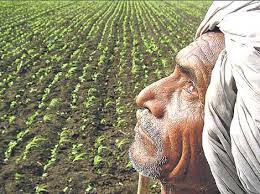Team ASEC | Where's the Water?
The Challenge | Where's the Water?
PROJECT SAW - Sustainability of Available Water
Providing actionable data visualization for a farm or region - farmers can use it to choose the crop and better access to water resources, urban planners can use it to choose the irrigation solutions to address water deficit and water sustainability

PROJECT SAW that is 'Sustainability of Available Water' helps in better access to water resources and making informed decisions for the human needs like - agriculture, industrial, domestic. SAW helps to do all this while monitoring the impact on water resources as well
Here we are trying to solve the problem of deficit of water due to which many farmers commit suicide in Marathwada region in the state of Maharashtra in India.
The first step is to search for a farmer’s plot of land and find it’s latitude and longitude using Landsat Data.
This latitude and longitude becomes the basic input to our data visualization tool.
The available resources of water in their particular area are classified into -
- Soil Moisture ( SMAP)
- Ground Water (Water Resources Information System of India),
- Surface Water Resources (Water Resources Information System of India)
- Precipitation ( GPM)
Other data required -
- Crop Types for a Region (Agropedia)
- Water requirement for different crops (Agropedia)
The user can see the seasonal change in water resources and the requirement for different crops on the same graph. Armed with this information they can make a wise decision on which crop to grow and where to get the required water from.
This can be useful for the region Marathwada, in the state of Maharashtra,India. This region contains 8-10 districts or subdivisions that are drought ridden since many years due low rainfall and unknown or unavailable water resources and depletion of groundwater .
In the project we tried to analyse a few districts like - Latur, Jalna in Marathwada using local data and satellite data. We made it simpler by consolidating the information as SAW Visualization from the vast available data that is difficult to correlate and understand otherwise. This project has attempted to channelize the satellite procured data and the derived researches and take it to the individuals that are in the need of it.
IMPACT of SAW Visualization
The farmer can use SAW by getting the following information-
- What are the available water resources
- What is the amount of water available in different months
- Get the crops schedule for water requirement
- Check which crops will survive based on the water available
- How are they impacting the nearby water resources
The urban planner can use SAW by getting the following information-
- What are the available water resources
- What is the amount of water available in different months
- Get the crops schedule for water requirement
- Analyse the water requirement for a region
- Plan for getting irrigation where required
- Plan for facilitating storing water during rainy season
This is the need of hour globally as well as locally as water scarcity is a matter of great concern. In case of Marathwada it is at a highly magnified level as it is resulting in farmer suicide due to financial difficulties and failing agricultural crops. In India agriculture is the primary occupation of the masses…and it all depends on water.
SpaceApps is a NASA incubator innovation program.